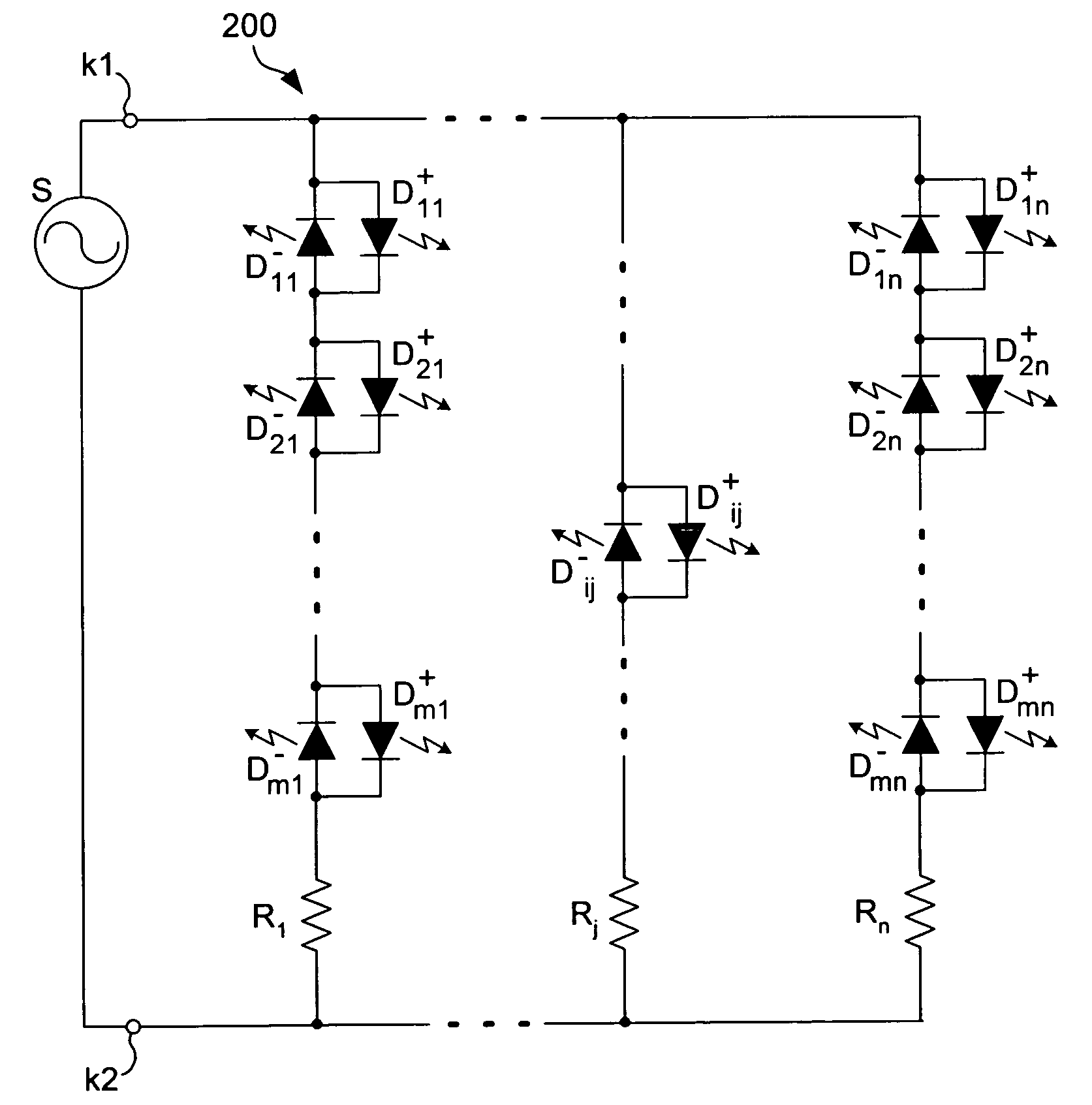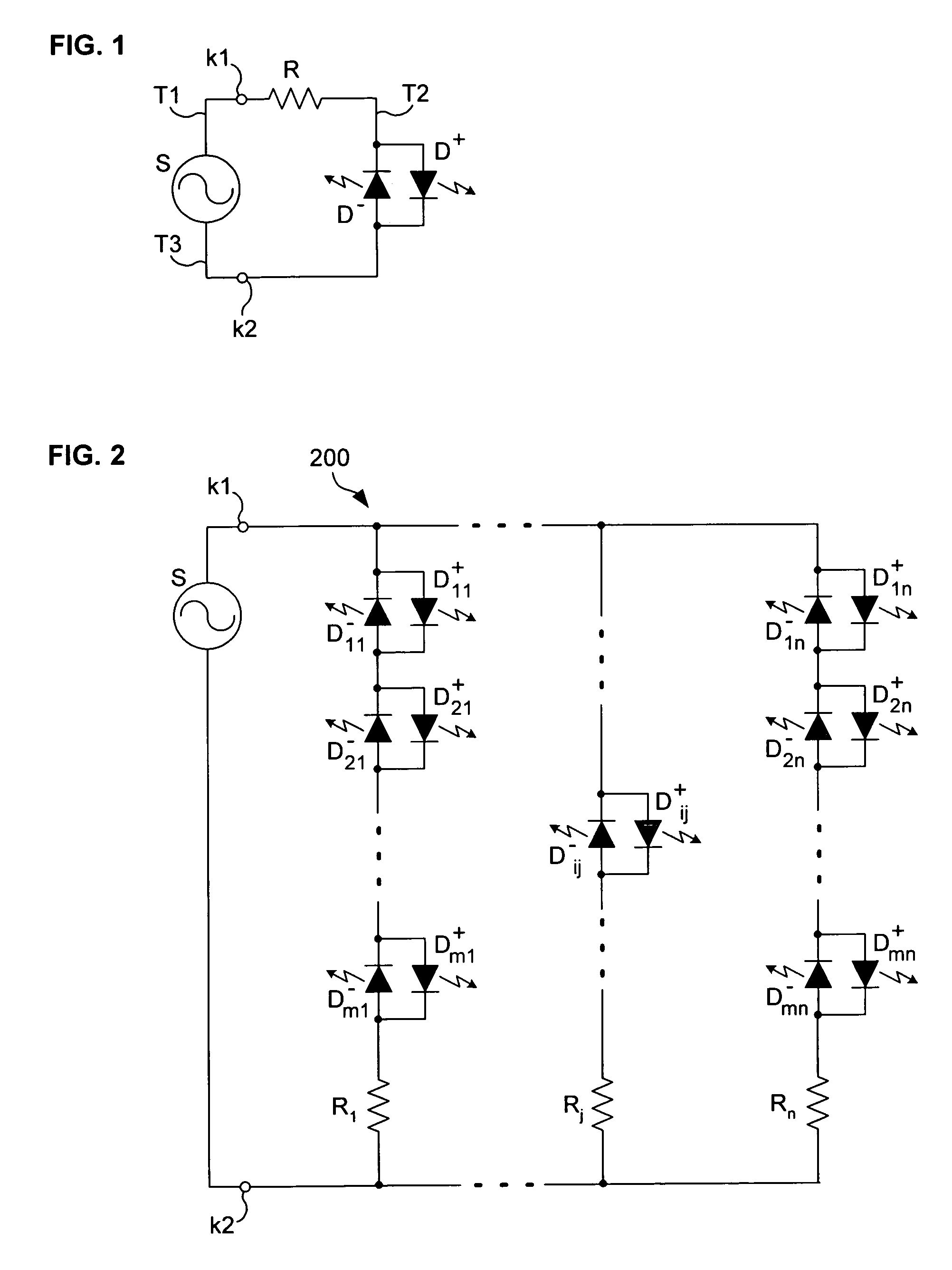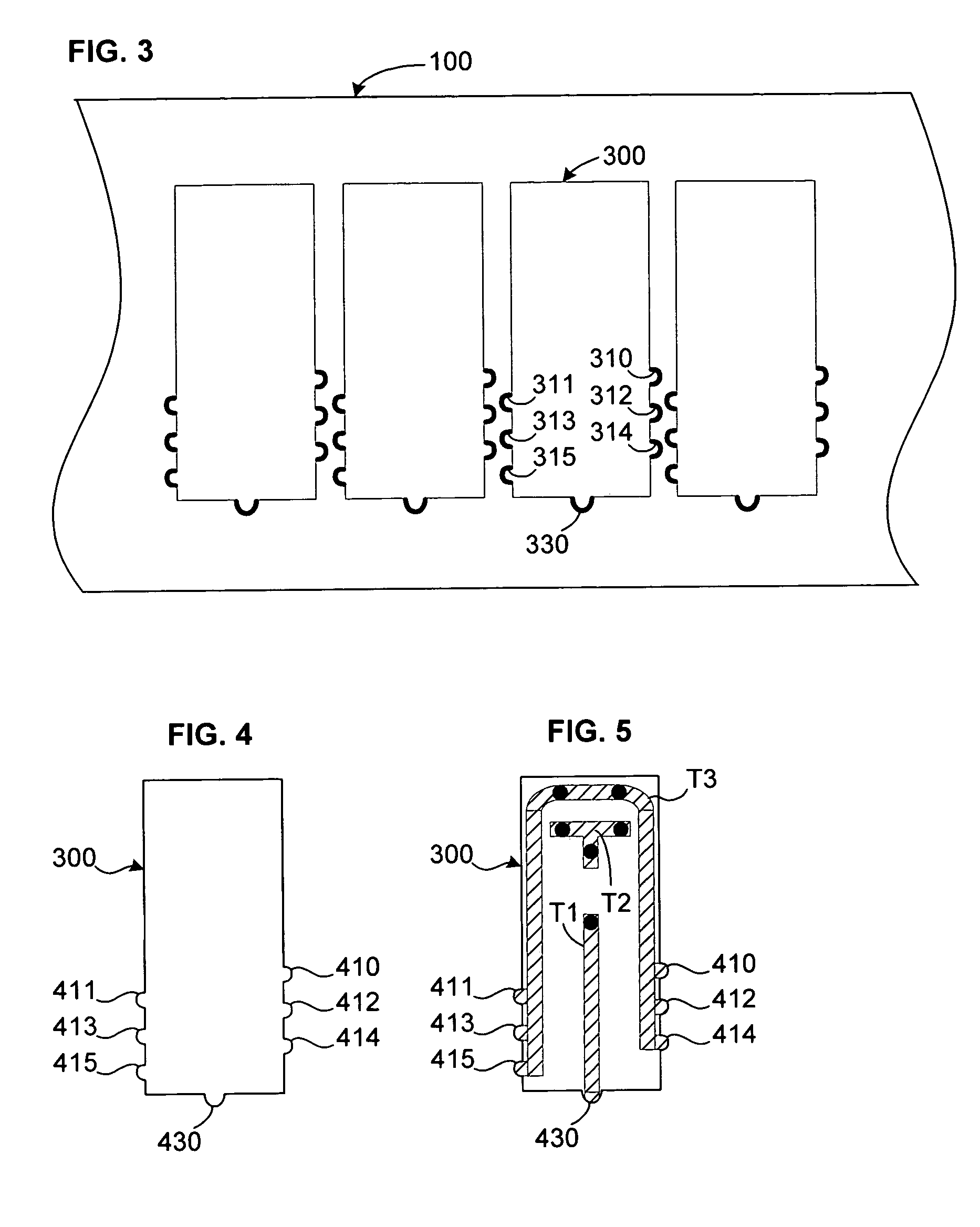Bi-directional LED-based light
a led-based light and led-based technology, applied in the field of light, can solve the problems of frequent replacement of dc devices, inconvenient maintenance of led-based lights, and inefficient energy use of incandescent bulbs,
- Summary
- Abstract
- Description
- Claims
- Application Information
AI Technical Summary
Benefits of technology
Problems solved by technology
Method used
Image
Examples
Embodiment Construction
[0037]FIG. 1 is a circuit diagram that illustrates the fundamental embodiment of the invention: A pair of LEDs D+ and D− are connected in parallel, with reverse polarity (with the anode of D+ connected to the cathode D− and the anode of D− connected to the cathode of D+), in series with a current-limiting device, R, typically a resistor, and driven via contacts k1, k2 by a power (or, equivalently, voltage or current) source S that delivers either alternating or direct current.
[0038]In applications that require illumination (such as reading lights) as opposed to simple indication (such as on / off), the LEDs D+ and D− are preferably of the super-luminescent type, for obvious reasons. Even a minimally skillful electrical engineer will be able to choose the actual type of LEDs used, as well as the type and value of the resistor R, to fit the needs of a given application given the specifications of the power source S, in particular, its peak delivered voltage.
[0039]Assume for the sake of ...
PUM
 Login to View More
Login to View More Abstract
Description
Claims
Application Information
 Login to View More
Login to View More - R&D
- Intellectual Property
- Life Sciences
- Materials
- Tech Scout
- Unparalleled Data Quality
- Higher Quality Content
- 60% Fewer Hallucinations
Browse by: Latest US Patents, China's latest patents, Technical Efficacy Thesaurus, Application Domain, Technology Topic, Popular Technical Reports.
© 2025 PatSnap. All rights reserved.Legal|Privacy policy|Modern Slavery Act Transparency Statement|Sitemap|About US| Contact US: help@patsnap.com



